In the livestock industry, selecting the appropriate bedding material is critical for ensuring hygiene, animal health, and economic efficiency. Mixed Wood Shavings is an advanced product designed to meet the stringent standards of quality, safety, and sustainability in modern livestock farming. This article compares Mixed Wood Shavings with traditional bedding materials such as straw, rice husk, and dry sand, providing a comprehensive overview to help farmers make the most informed choice.
1. Characteristics of Mixed Wood Shavings
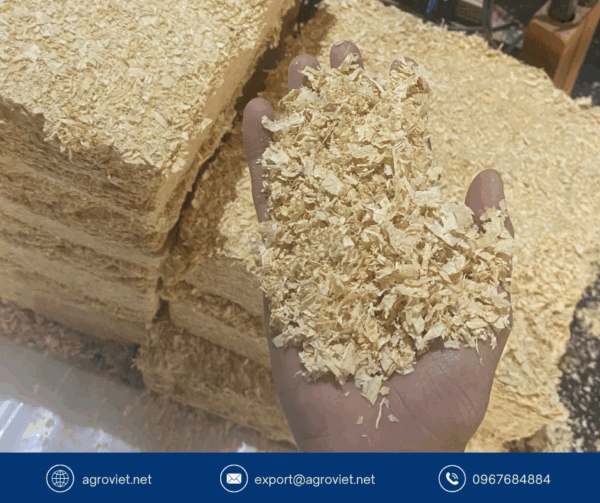
Mixed Wood Shavings is a bedding product made from a blend of natural and industrial wood, processed through advanced techniques to ensure cleanliness, fineness, and absolute safety. Specifically designed for use as livestock bedding, it offers numerous superior advantages.
-
Superior Moisture Absorption: With its porous structure, Mixed Wood Shavings rapidly absorbs moisture, keeping the livestock environment dry and preventing the growth of bacteria and mold. This is particularly crucial in high-humidity farming conditions where disease risks are elevated.
-
Effective Odor Control: Thanks to its natural composition and excellent absorption capacity, the product neutralizes and minimizes odors from manure and urine, creating a more pleasant environment for both animals and caretakers.
-
Safe and Environmentally Friendly: Mixed Wood Shavings undergoes thorough processing to remove impurities and harmful chemicals, using sustainably sourced or recycled wood. This ensures safety for livestock and contributes to environmental conservation.
Additionally, the product features uniform shavings, making it easy to spread and clean, thus saving time and labor in barn management. It is an ideal choice for modern farms, from small-scale to large operations, aiming to enhance livestock quality and optimize performance.
2. Comparison with Traditional Bedding Materials
a. Straw
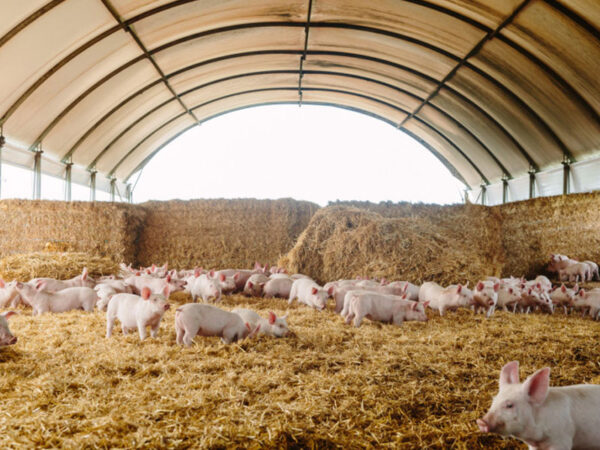
Straw is one of the most common traditional bedding materials, valued for its low cost and abundant availability in agricultural regions. However, in the context of modern livestock farming, straw has significant limitations.
-
Poor Moisture Absorption and Prone to Dampness: Straw has very limited absorbency, quickly becoming wet when exposed to manure or urine, leading to a damp barn environment. This creates favorable conditions for bacteria and mold growth, causing skin or respiratory diseases in livestock.
-
Difficult Odor and Hygiene Control: Straw lacks odor-neutralizing properties, resulting in unpleasant smells in the barn that affect both animals and caretakers. Additionally, straw often contains impurities like dust, soil, and insects, increasing the risk of disease transmission and making cleaning labor-intensive.
-
Limited Durability and Long-Term Costs: Straw rapidly decomposes or breaks down during use, requiring frequent replacement. This increases operational costs and disrupts barn management, particularly in large-scale farms.
Comparison: Mixed Wood Shavings outperforms straw in moisture absorption, odor control, and hygiene. The product maintains a clean and dry barn environment, reduces disease risks, and enhances animal well-being, thereby improving farming efficiency.
b. Rice Husk
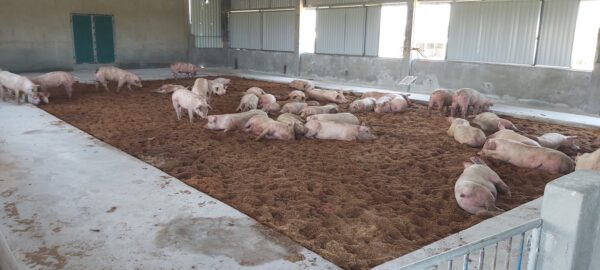
Rice husk is a popular bedding material in rice-growing regions, favored for its low cost and accessibility. However, it is not an optimal solution for professional livestock farming due to inherent limitations.
-
Moderate Absorption and Low Durability: While rice husk absorbs moisture better than straw, it still falls short compared to Mixed Wood Shavings. When exposed to water, rice husk easily decomposes or clumps, reducing its effectiveness and requiring frequent replacement, which increases time and labor costs.
-
Lack of Uniformity and Management Challenges: Rice husk often varies in size, scatters easily, and creates messiness in the barn, complicating cleaning efforts. This increases labor demands and affects the barn’s aesthetics and hygiene.
-
Supply and Quality Limitations: In areas without rice production, sourcing high-quality rice husk in large quantities can be challenging, especially during the rainy season. Additionally, unprocessed rice husk may contain impurities that impact animal health.
Comparison: Mixed Wood Shavings offers superior moisture absorption, greater durability, and better uniformity than rice husk. It ensures a stable, clean, and manageable barn environment, providing significant advantages for farmers.
c. Dry Sand
Dry sand is occasionally used as a bedding material, particularly in areas near natural sand sources or for poultry farming. However, it is not an ideal choice for large-scale or professional livestock operations due to several notable drawbacks.
-
Poor Absorption and Odor Control: Dry sand has almost no moisture-absorbing capacity, leading to wet and odorous barn conditions from manure or urine. This increases disease risks, particularly in high-density farming where hygiene is critical.
-
Difficult to Clean and Dust Issues: Dry sand generates significant dust during use, which can cause respiratory irritation for both animals and caretakers. Cleaning sand is labor-intensive due to its weight and tendency to scatter, increasing labor costs and management time.
-
Environmental Impact and Lack of Sustainability: Sand extraction can negatively impact the environment, especially in areas sensitive to resource depletion. Moreover, sand is not biodegradable, posing challenges for waste disposal after use and increasing environmental handling costs.
Comparison: Mixed Wood Shavings far surpasses dry sand in moisture absorption, odor control, and safety. With its modern production process, the product ensures cleanliness, uniformity, and environmental friendliness, creating a significantly better barn environment than dry sand.
3. Key Benefits of Mixed Wood Shavings
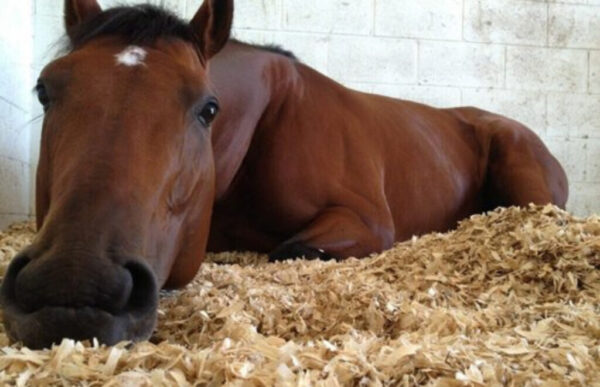
Compared to traditional bedding materials, Mixed Wood Shavings offers numerous superior benefits, fully meeting the demands of modern livestock farming:
-
Improved Animal Health: A dry and clean barn environment reduces the risk of respiratory, skin, or infectious diseases. This not only improves survival rates but also enhances the quality of livestock products, such as meat, eggs, and milk.
-
Long-Term Cost Savings: Although the initial cost may be higher than straw, rice husk, or dry sand, Mixed Wood Shavings’ high durability and reduced replacement frequency result in significant savings in operational costs and labor over time.
-
Environmentally Friendly and Sustainable: Produced from sustainably sourced or recycled wood, the product minimizes environmental impact. Additionally, Mixed Wood Shavings can be reused or biodegraded, supporting sustainable farming goals.
Furthermore, the product adapts easily to various farming conditions and scales, from small-scale farms to industrial operations, delivering optimal economic and environmental benefits.
4. Practical Applications of Mixed Wood Shavings

Mixed Wood Shavings is a versatile solution suitable for various types of livestock farming, meeting diverse industry needs:
-
Poultry Farming: Used as bedding for chickens, ducks, and geese, it keeps barns dry, reducing the risk of avian influenza and other infectious diseases. This is especially critical in large-scale poultry farming, where barn hygiene directly impacts productivity.
-
Livestock Farming: Ideal for cattle, pig, and goat barns, it ensures hygiene and comfort, contributing to higher productivity and better-quality products like milk or meat.
-
Pet Breeding: With its softness, safety, and non-irritating properties, Mixed Wood Shavings is perfect for cages housing rabbits, hamsters, or other small pets, providing a comfortable and clean living environment.
The product also integrates seamlessly into automated or semi-automated farming systems, optimizing care and barn management processes, thereby enhancing operational efficiency and reducing labor costs.
5. Conclusion
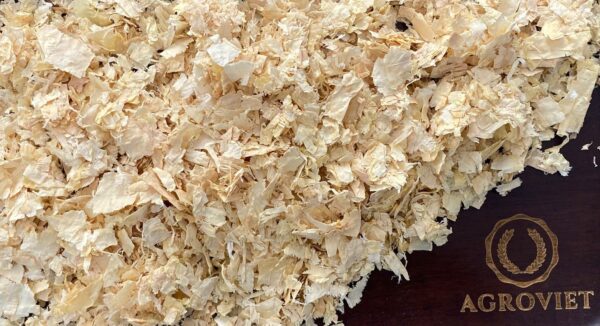
Mixed Wood Shavings is a modern bedding solution that significantly outperforms traditional materials like straw, rice husk, and dry sand. With its superior moisture absorption, effective odor control, safety, and environmental friendliness, this product not only enhances animal health but also delivers long-term economic benefits for farmers. It is the ideal choice for farms aiming to improve livestock quality, optimize operations, and pursue sustainable development goals.
Contact us today to learn more and experience Mixed Wood Shavings – a high-quality bedding solution that helps you build a clean, efficient, and environmentally friendly farm!
📩 Contact us now for the best offer!
📞 (+84) 967 684 884
🟢 Agroviet – Quality you can trust, solutions your farm needs!
